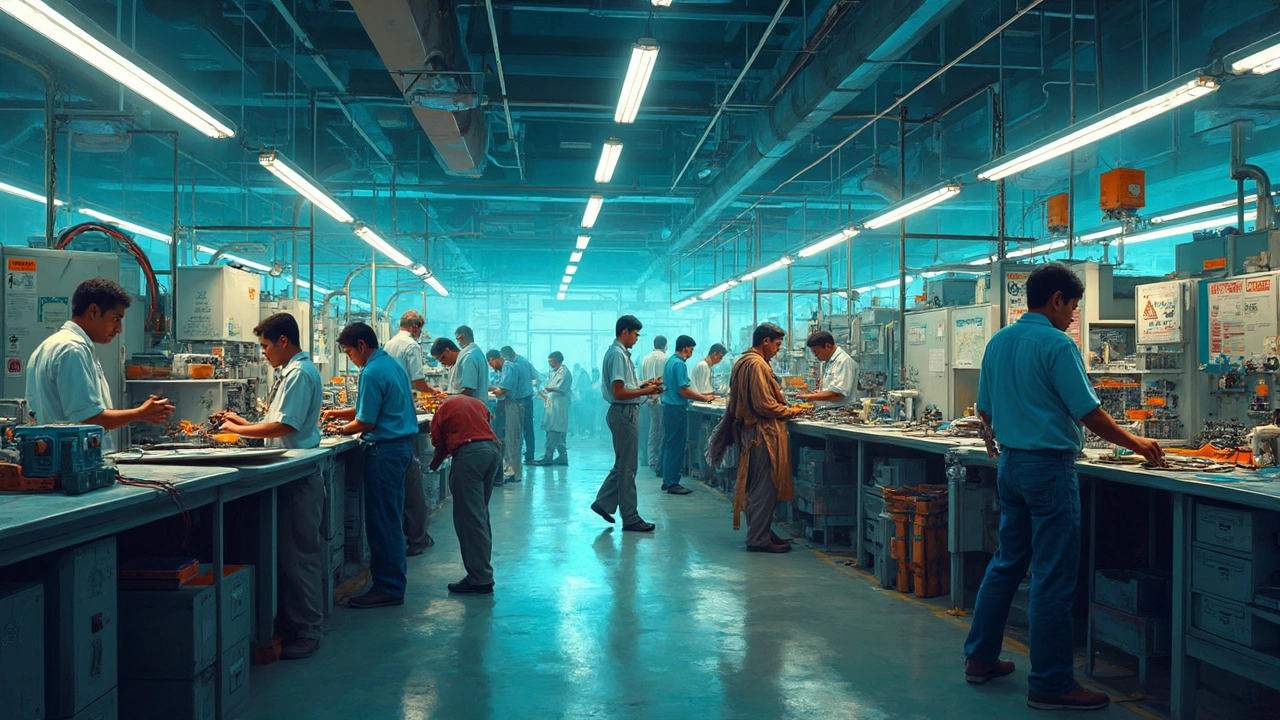Understanding 220V for Industrial Machines
If you work with manufacturing gear in India, you’ve probably seen the term 220V on spec sheets, labels, or product listings. It’s not just a number – it tells you the voltage the machine needs to run safely and efficiently. In this guide we’ll break down why 220V is common, what it means for your plant, and how to pick the right 220V equipment without guessing.
Why 220V is the Go‑to Voltage in Indian Industry
India’s power grid supplies two main voltages for commercial use: 110V and 220V. Most heavy‑duty machines, from CNC mills to injection molding units, run on 220V because it reduces current draw. Lower current means smaller wiring, less heat, and lower energy loss – all good for a factory’s bottom line.
Another reason is compatibility. Many imported machines are built for 220‑240V markets, so they fit right into Indian plants without needing a transformer. That saves you time and installation cost.
Choosing the Right 220V Equipment
When you’re scanning product catalogs, keep these three checks in mind:
1. Power rating matches your load. Look at the machine’s kW or HP rating and compare it to your existing supply. If the machine needs 5 kW, make sure the circuit can deliver at least that amount plus a safety margin.
2. Safety certifications. India follows IS 3800 and IEC standards for electrical safety. A machine with those marks is less likely to cause trips or fires.
3. Future expansion. Think about the next five years. If you plan to add more units, choose a power distribution board that can handle extra 220V lines without a major overhaul.
Once you have the basics covered, talk to the supplier about warranty, after‑sales service, and spare parts availability. Those factors often matter more than the initial price.
In practice, many manufacturers also offer dual‑voltage options (110V/220V). If your plant has mixed voltage zones, a dual‑voltage machine can save you the hassle of rewiring.
Finally, don’t skip the on‑site test. A quick run‑in allows you to verify voltage stability, noise levels, and any unexpected heat buildup before you fully integrate the machine.
By understanding what 220V means, checking power ratings, and confirming safety standards, you can pick equipment that runs smoothly and lasts long. Whether you’re upgrading an existing line or setting up a new workshop, the right 220V choice can boost productivity and keep your electric bills in check.

Is India 110V or 220V? Power Facts for Electronics Manufacturing
India runs on a 220V power system, not 110V, which makes a huge difference for anyone manufacturing or using electronics there. Understanding how this voltage impacts device compatibility, safety, and production can save time and money. This article covers what you need to know about India's electrical standards, why they're set up this way, and some real-world tips for handling devices and factories. Get the practical insights you need whether you’re visiting India or setting up an electronics plant. No confusing jargon—just the facts you need.
Read More